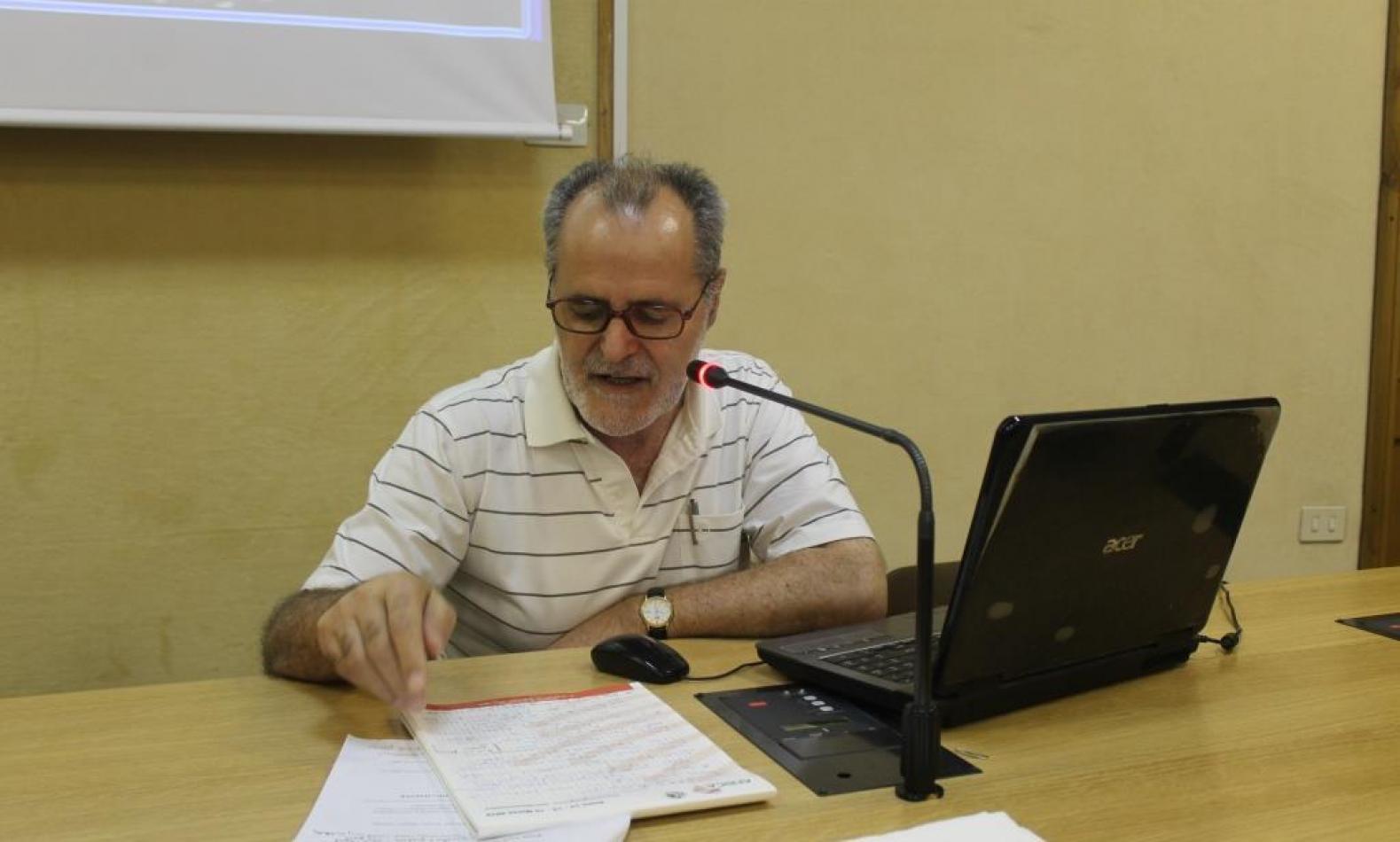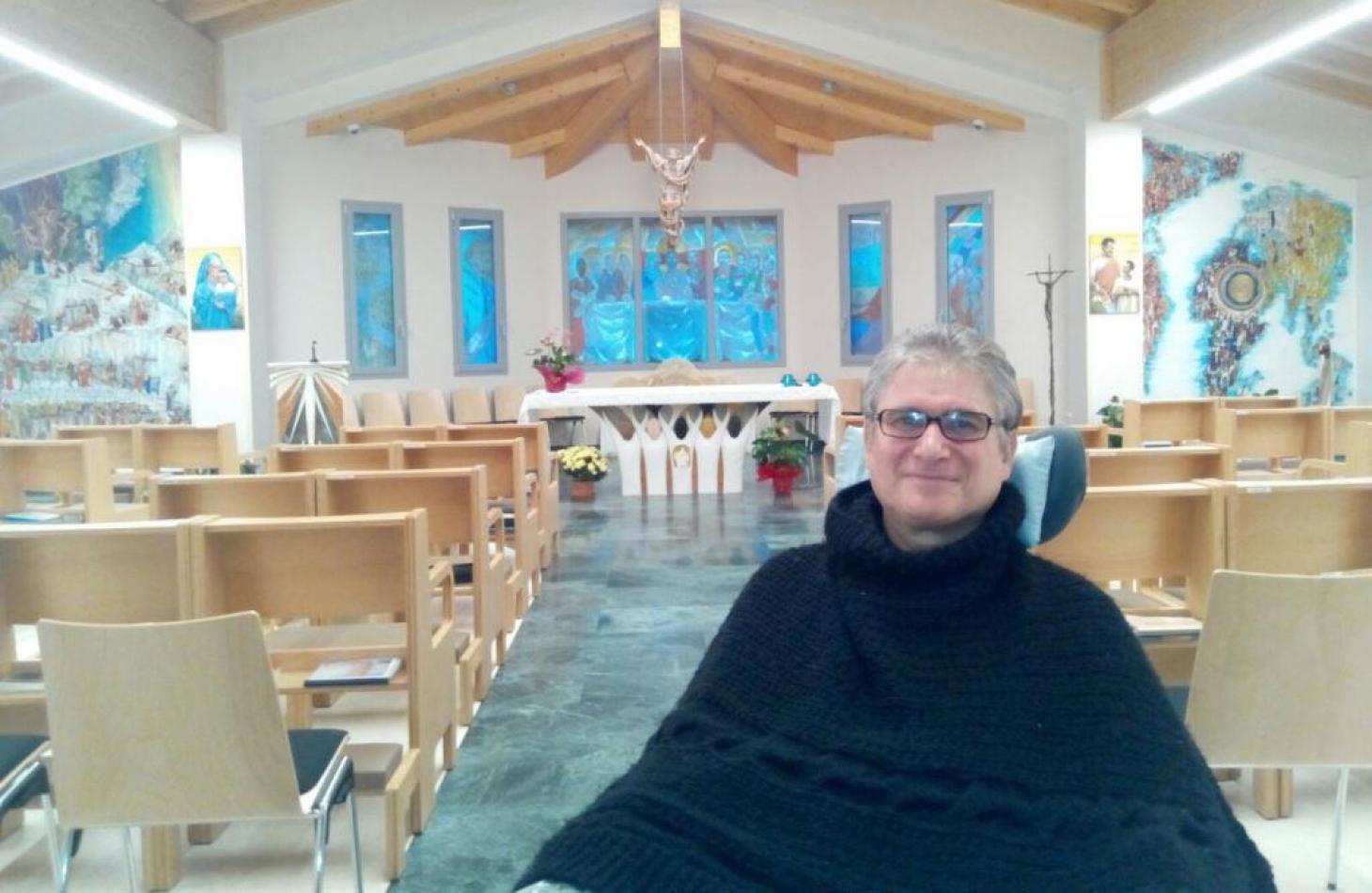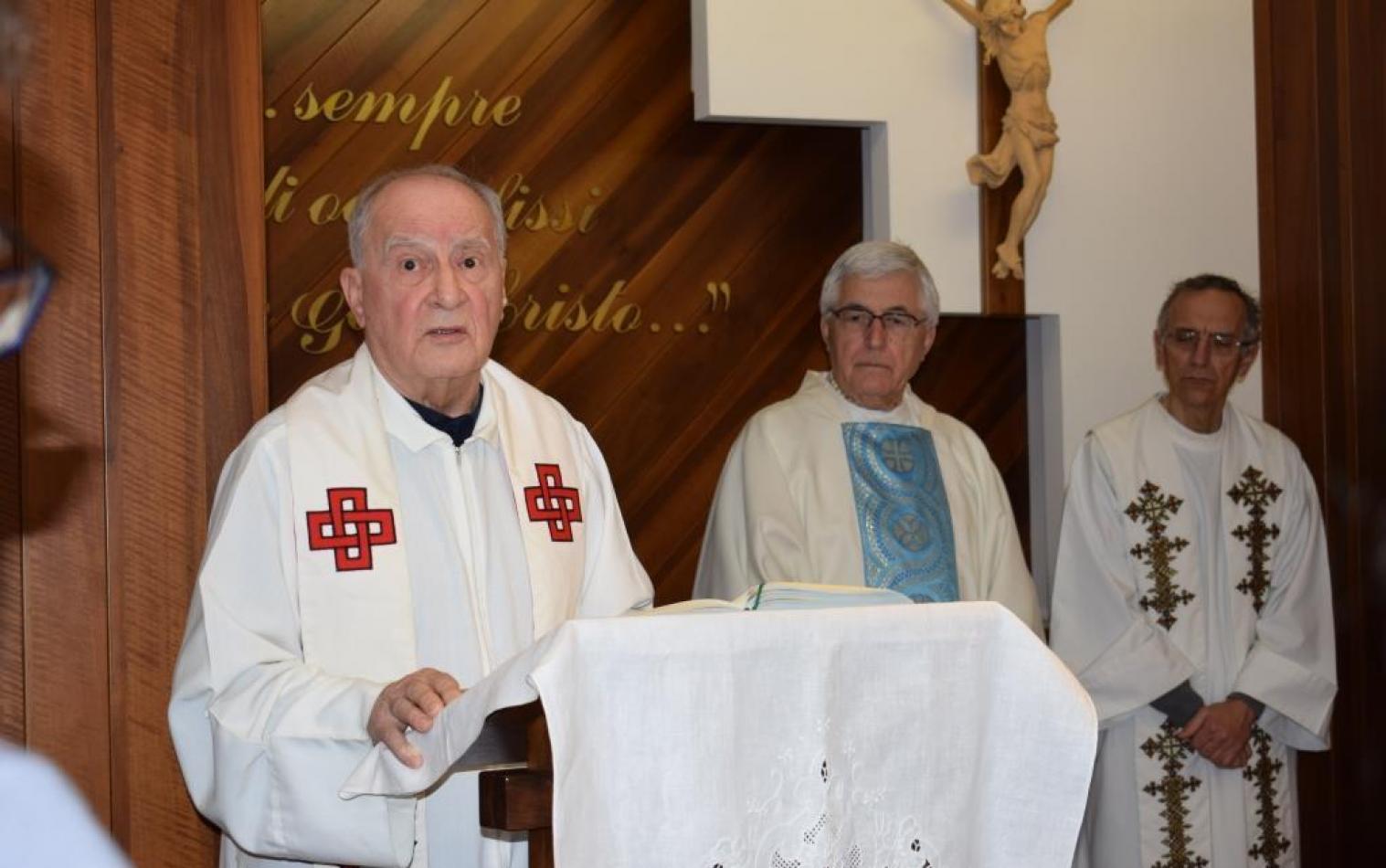Daniel Comboni
Comboni Missionaries
Institutional area
Other links
Newsletter
Rome, January 2018
To bring to completion the “Guide to the Implementation of the XVIII General Chapter”, pp. 18-19, Italian version, the year 2018 shall be dedicated to the Rule of Life. May the Lord Jesus, through the intercession of Mary and of St. Daniel Comboni, accompany us in this journey of the Institute which, unlike the times in which the Rule of Life was drafted, breathes a multicultural air: European, African, American and Asian. May we be truly able to grasp these multicultural riches which, rather than making us afraid or anxious, launch us out into the adventures and surprises of the Spirit, making us grow together in our Comboni identity, in the quality of inter-personal relations and in the prophecy of mission (Cf. CA 2015, 47.3). Fr. Jeremias dos Santos Martins.
THE YEAR 2018
THE PROCESS OF REVISITING AND REVISING
THE RULE OF LIFE
“Therefore, every scribe who becomes a disciple in the Kingdom of Heaven is like a householder
who brings out from his store things both new and old”
(Mt 13,52)
To bring to completion the “Guide to the Implementation of the XVIII General Chapter”, pp. 18-19, Italian version, the year 2018 shall be dedicated to the Rule of Life.
“Memory Transfusion”
“We need to ‘remember’, to take a step back from the present to listen to the voice of our forebears’”. These are the words spoken by Pope Francis when he received the 2016 Charlemagne Prize and spoke to the leaders of Europe, inviting them to perform a “memory transfusion” so as to create a true update of Europe of today.
When memory dies, the meaning of history is lost. A person’s feeling of belonging to a family, a group or an institution is closely connected to memory. I exist as I am because others existed before me and others will exist after me: “I am because we are!”.
The process of “revisiting and revising the Rule of Life” has much to do with memory since the RL is the ripe fruit of a journey completed, a life lived, of a multiplicity of encounters involving people, events, successes and failures, hopes and dreams. It is the fruit of many years of confidence in God who guides history, of self-giving to different peoples and races. It is the fruit of working together, of fraternal life lived in reciprocal acceptance, forgiveness and reconciliation. It is a reflection of the experience and life of the peoples with whom the Comboni Missionaries have shared their thirst for justice and peace, the characteristics of the Kingdom of God.
In this 200-page booklet we come into contact with the life of Daniel Comboni and that of the first missionaries who set out with only one objective in mind, the glory of God and the salvation of souls. Underneath the words we may read in filigree the history of those missionaries whom the 2015 General Chapter calls “existential parables”: we also have the history of our confreres on the way towards the recognition of their holiness by the Church; we have the history of our martyrs, those who shed their blood and that of all those who, in silence, died down through the years, walking humbly among the people, allowing themselves to be guided by the God of their lives, learning languages, cultures, religions, attending the school of the poor, considering them their “teachers and companions”; we have the history of conflicts and tensions, fear and hope, of death in youth or old age, in the silence of the forests or the noise of the city, in the quiet of peace or amid sounds of war, in the struggle for justice and a world of brotherhood.
Vision for the Future: “I foresee a wonderful future for Africa” (Comboni)
If it is a serious matter not to remember, it is equally serious not to see. The lack of vision and, worse still, the lack of a vision for the future, are both very serious handicaps. Even while recognising that we cannot forget history and evaluate the lived mission, expressed in words in the Rule, that is “part of our most genuine patrimony” (CA 2015, No. 49.1), we feel the need to move ahead in order to live better the Comboni mission today.
When the members of the GC visit the provinces and see the dedication and the missionary passion of the confreres, in addition to the work that they carry out on many missionary frontiers, they experience the vitality of the Comboni charism. This is a fine sign of hope that we cannot sweep under the carpet. Although we recognise our limits and our sins in the various services that we render to so many peoples of the world, we feel even more strongly the call of God to continue our missionary service with a new vision, with renewed passion and a life that is unreservedly self-giving, following the example of Christ the Good Shepherd. We feel the desire and the urgent need to share with the peoples the dream of Comboni who knew how to read the signs of God and discovered that the time of grace of Providence to call the African peoples to Christ had come (cf. W 1403, RL 6).
In the process of revisiting and revising the RL, we need to keep these two lights always before us to guide our steps: the mission lived and the mission to be lived today on the new Areopagi of our world.
1. 2018 – Year of the Rule of Life
In order to carry forward the inspiration of the 2015 General Chapter, the year 2018 will be dedicated to “revisiting and revising the Rule of Life” (CA 15, 49). To this end, in the Consulta of March, 2017, the GC appointed a central commission for the RL and a commission of consultants. The members of these two commissions met in Rome in July to examine together the steps to be taken and how to undertake this long, demanding process. In fact, even though only 2018 will be officially devoted to the RL, the process of revision will go on until the General Chapter of 2021. During that Chapter, the two commissions will present the results of their work, proposing concrete suggestions and motions for the revision of the text of the RL.
The commission appointed in 2003 for the celebration of the Silver Jubilee of the RL concluded that there was a feeling of “tiredness or disaffection” with the RL. This disaffection still seems to be present today. We realise that many confreres only have a superficial knowledge of the text and its implications. Others use it on rare occasions to justify a position or to claim a right. Again, others are concerned with the new sensibilities of the members of the Institute whose face has changed and they feel that some texts of the Rule need to be revised, even though the spirit of the content remains valid. It is agreed that there is a need, not just to know the RL better but to reflect upon its content and study it in a climate of prayer. There is an urgent need to reflect upon and live out the content of this fundamental text for the life of the Comboni missionaries, the fruit of many years of missionary work and of the joys and burdens of the mission. In fact, our RL, as stated above, is not a document produced sitting at a desk but one that expresses the lives of many missionaries who preceded us. It is the fruit of the reflection and novelty of the Second Vatican Council, of the reform of Canon Law but, above all, it is essentially a lived missionary experience expressed in words.
2. The 1988 Rule of Life
We like to remember (ricordare – carry in one’s heart) the way travelled to reach the goal of the present text of the RL. On 22 June 1979, the solemnity of the Sacred Heart of Jesus and the opening day of the XII Special General Chapter, the reunion of the two Comboni congregations, FSCJ and MFSC, was officially sanctioned, making a single Institute, the Comboni Missionaries of the Heart of Jesus with the acronym MCCJ. The occasion was seen as an event of the Holy Spirit who guides history along wonderful paths. Thus, an Institute divided for around 56 years, since 1923, was once again a single family, finding its identity in the mission that is the mission of the Heart of God, in the footsteps of the great apostle of Africa, St. Daniel Comboni.
The new Institute needed a new rule to guide the steps of the missionaries and so it formed a commission to draft a new RL, bearing in mind especially the plural journey of the Comboni Institute, the invitation of Vatican II to return to the “primigenia inspiratio”, and other documents of the Church. This was how, as a result of the work of the commission and the participants of the 1979 Chapter, the first text was produced and presented to the Congregation for the Evangelisation of Peoples by which it was approved ad experimentum for a period of seven years.
The General Chapter of 1985 was a moment in which the text of the RL was verified. The text was improved, taking into account the particular comments of the confreres, those of the Chapter itself, the indications of the new Code of Canon Law (1983) and the comments of the Holy See.
In 1987, the centenary year of the first Comboni professions, pressure was brought to have the document approved. On 3 December 1987, the celebration of St. Francis Xavier, principal patron of the missions, the Congregation for the Evangelisation of Peoples definitively approved the text of the RL as we have it today. With a letter dated 10 June 1988, the feast of the Sacred Heart of Jesus, the GC presented the new text to the confreres: “we hereby present you with the definitive edition of the Rule of Life approved by the Sacred Congregation for the Evangelisation of Peoples with a decree dated 3 December 1987… For the Institute and each one of its members, the Rule is a fundamental document for living, according to the charism, the consecration to God for the missions” (letter of the GC, 10.06.1988). Furthermore, the GC invites all confreres to “assiduously read and meditate on it” to discover and assimilate its content and the deep motivations that bring us back to the “primigenia inspiratio”.
Once the RL was approved and printed in 1988, there were various initiatives to help us to understand better the riches of our Rule. Some of these bore the desired fruit. Others, such as “Today with Daniel Comboni – a Biblical commentary on the Rule of Life”, offered us the possibility to understand better and live more deeply the RL. In 2013, the celebration of the 25th anniversary of the RL, moved the GC to appoint a commission to examine the relevance of the RL in the lives of the Comboni Missionaries. Unfortunately, for various reasons, this work was never completed. Nevertheless, many confreres wrote on the various aspects of the RL, with profound reflections that are still available today. This was the last effort at Institute level to approach the refreshing waters of our Rule.
Thirty years later, bearing in mind the new make-up of the Institute, the 2015 Chapter participants again felt the need to approach the Rule, to come to know it, to re-appropriate its content so as to live it better and, if necessary, to alter some formulations to bring them into line with the new times of mission and the life of the Institute.
3. Central Commission Proposals for Work
By now, all the continents will have held seminars in preparation for the re-launching of the process of updating the RL. In some continents, many provincials took part in the seminars, a good sign of interest and commitment to continue the work. In fact, besides the confreres designated to animate the process, the provincials are primarily responsible for ensuring the completion of this journey.
3.1 – The process in 2018
The General Commission for the RL, during its meeting in July 2017, presented a schedule plan as a guide to revisiting and revising the RL. This plan has already been sent out to everyone through the circumscription superiors. We again present it below for those who may not have it.
3.1.1 The process of “revisiting and revision” in the various circumscriptions
The process will run from January 2018 to January 2019, in five stages:
January-February 2018: reflection on the first part of the Rule of life, “The Founder and the Institute”;
March-April 2018: reflection on the second part of the Rule of Life, “The Institute as a communion of brothers consecrated to missionary service”;
May-June 2018: reflection on the third part of the Rule of Life, “Missionary service of the Institute”; June: meeting via Skype to evaluate the work done according to that which the provinces will have sent to the central commission;
September: The Central Commission will report to the Intercapitular Assembly on the work being done to be followed by a first evaluation;
July-October 2018: reflection on the fourth part of the Rule of Life, “The service of authority in the Institute”;
November 2018-January 2019: reflection on the fifth part of the Rule of Life, “Administration of the goods of the Institute”.
When this work is complete, on a date to be agreed, the two commissions will meet to evaluate together all that has been gathered to see how to proceed with the work.
3.1.2 Revisiting and revision
a) Revisiting: a re-reading of the Rule of Life from within the historical, cultural, ecclesial and Comboni contexts of today, to gain a new understanding and appropriation of it, so that it may continue to work as a source of life, of identification, of fraternal communion and missionary service.
b) Revision: even though it forms “part of our most genuine patrimony” (CA 2015, No. 49.1), some aspects of our Rule of Life “need to be revised in the light of the Institute’s present situation, inter-culturality, the new vision of mission, documents of the Church and a better knowledge of our Founder” (CA 2015, No. 50.1).
3.1.3 The process of interiorisation and personalisation
As a method of approach to the RL, the commission has proposed that of Lectio Divina.
a) At triple level: personal, communitarian and inter-communitarian (circumscription).
This allows us to situate the content in time, to interiorise it and study it at personal level, share it with the confreres and discern together to review the text and create a new one from it, more suitable for the present moment, if and when necessary.
b) In three basic steps:
- Read the Rule of Life in light of the history of the Founder and the Institute, to perceive the experience that the “letter” has condensed.
- Meditate on the Rule of Life so that the experience it contains may become part of a fruitful exchange between our daily lives and the mission today.
- Pray the Rule of Life, that the reflection and sharing may become dialogue with the Father, conformation to Jesus the Missionary and an invocation of the Spirit for an ever deeper communion with Comboni and among ourselves for the coming of the Kingdom.
3.1.4 Material for Familia Comboniana
Throughout 2018, our monthly newsletter Familia Comboniana will offer all confreres reflections on the RL to accompany the work mentioned above, No. 3.1.1. This material will be prepared by the various continents. The central commission will ask some confreres to perform this service to the Institute.
Conclusion: with our eyes fixed on Jesus, on Comboni and on the realities where we work
It is important to remember these three central points of the process which we will undertake together (see letter of the GC launching the year of the RL). We cannot carry out this process without bearing in mind that the birth of our Institute is the fruit of an attentive study of the African reality that Comboni had come into direct contact with during his first African experience: this reality, seen in light of the charismatic experience of 15 September 1864, urges in him the desire to live and die for the cause of Africa (cf. W 2741-42).
I would like to conclude with the invitation written by the 79 members present at the General Chapter of 1979, explaining the process and the meaning of the new Rule of Life, approved ad experimentum: that, with the grace of the Spirit, “we may transform into life this Rule we have chosen”. It is not so much a matter of changing the Rule as a matter of changing life according to the Spirit who gives life to the Rule.
May the Lord Jesus, through the intercession of Mary and of St. Daniel Comboni, accompany us in this journey of the Institute which, unlike the times in which the Rule of Life was drafted, breathes a multicultural air: European, African, American and Asian. May we be truly able to grasp these multicultural riches which, rather than making us afraid or anxious, launch us out into the adventures and surprises of the Spirit, making us grow together in our Comboni identity, in the quality of inter-personal relations and in the prophecy of mission (Cf. CA 2015, 47.3).
Fr. Jeremias dos Santos Martins




